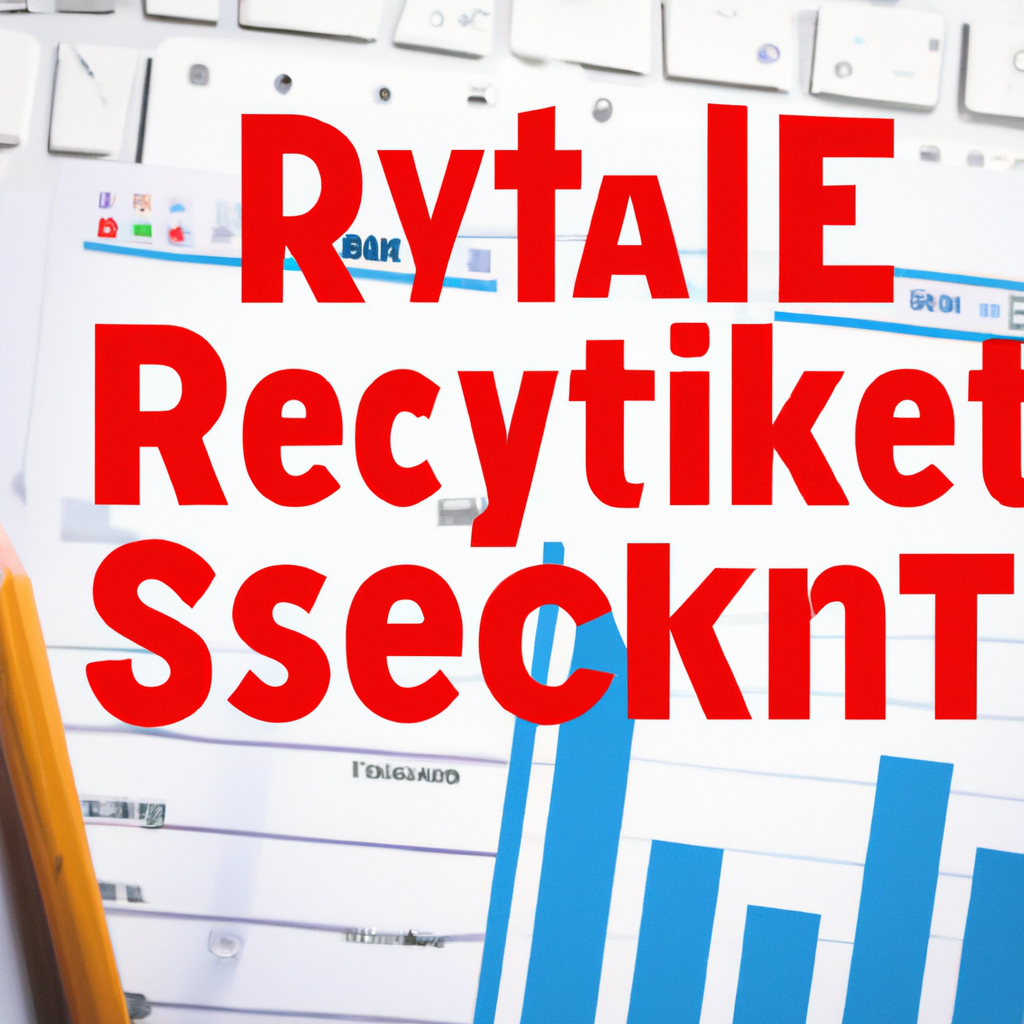-
Table of Contents
- Skyrocket Your Business with Proven Search Engine Marketing Tactics!
- The Importance of Search Engine Marketing
- Proven SEM Tactics to Skyrocket Your Business
- 1. Keyword Research and Optimization
- 2. Ad Copy and Design
- 3. Landing Page Optimization
- 4. Ad Scheduling and Targeting
- 5. Remarketing
- 6. A/B Testing
- Real-Life Examples of Successful SEM Campaigns
- 1. Dollar Shave Club
- 2. Airbnb
- Conclusion
Skyrocket Your Business with Proven Search Engine Marketing Tactics!

In today’s digital age, having a strong online presence is crucial for the success of any business. With the majority of consumers turning to search engines to find products and services, it is essential for businesses to have a solid Search Engine Marketing (SEM) strategy in place. SEM involves using paid advertising to increase a website’s visibility on search engine results pages (SERPs). In this article, we will discuss proven SEM tactics that can help skyrocket your business and drive more traffic, leads, and sales.
The Importance of Search Engine Marketing
Before we dive into the tactics, let’s first understand why SEM is essential for businesses. According to a study by BrightEdge, organic search drives 51% of all website traffic, while paid search drives 10%. This shows that both organic and paid search are crucial for driving traffic to your website. However, paid search can provide immediate results and help businesses reach their target audience more effectively.
Moreover, with the ever-changing algorithms of search engines, it has become challenging for businesses to rank organically on the first page of SERPs. This is where SEM comes in. By investing in paid search, businesses can ensure that their website appears at the top of the search results, increasing their visibility and driving more traffic.
Proven SEM Tactics to Skyrocket Your Business
1. Keyword Research and Optimization
The foundation of any successful SEM campaign is keyword research and optimization. Keywords are the words or phrases that users type into search engines when looking for a product or service. By identifying the right keywords, businesses can ensure that their ads are shown to the right audience.
There are various tools available, such as Google Keyword Planner, SEMrush, and Ahrefs, that can help businesses conduct keyword research. These tools provide insights into the search volume, competition, and cost-per-click (CPC) of keywords, allowing businesses to choose the most relevant and cost-effective ones for their campaigns.
Once the keywords are identified, it is crucial to optimize them in the ad copy, landing pages, and website content. This will not only improve the quality score of the ads but also increase their relevance, leading to higher click-through rates (CTRs) and conversions.
2. Ad Copy and Design
The ad copy and design play a significant role in the success of an SEM campaign. The ad copy should be compelling, relevant, and include a call-to-action (CTA) to encourage users to click on the ad. It should also highlight the unique selling points of the product or service being advertised.
Moreover, the ad design should be visually appealing and eye-catching to grab the attention of users. It should also be consistent with the brand’s image and messaging. Including images or videos in the ad can also make it more engaging and increase the chances of conversion.
3. Landing Page Optimization
Once a user clicks on an ad, they are directed to a landing page. The landing page should be optimized to provide a seamless user experience and encourage conversions. It should have a clear and concise headline, relevant and persuasive content, and a prominent CTA.
Additionally, the landing page should be mobile-friendly, as more and more users are accessing the internet through their mobile devices. A slow or unresponsive landing page can lead to a high bounce rate and negatively impact the ad’s performance.
4. Ad Scheduling and Targeting
Ad scheduling and targeting are crucial for ensuring that the ads are shown to the right audience at the right time. With ad scheduling, businesses can choose specific days and times to run their ads, depending on when their target audience is most active. This can help save money by avoiding showing ads during non-peak hours.
Targeting options such as demographics, interests, and behaviors can also help businesses reach their ideal audience. For example, a business selling sports equipment can target users interested in sports or fitness. This ensures that the ads are shown to users who are more likely to be interested in the product or service being advertised.
5. Remarketing
Remarketing is a powerful SEM tactic that involves targeting users who have previously visited your website or interacted with your brand. By showing ads to these users, businesses can remind them of their products or services and encourage them to make a purchase.
Remarketing can be done through various channels, such as Google Ads, Facebook Ads, and LinkedIn Ads. It is an effective way to stay top-of-mind with potential customers and increase conversions.
6. A/B Testing
A/B testing, also known as split testing, involves creating two versions of an ad or landing page and testing them to see which one performs better. This can help businesses identify which elements of their ads or landing pages are resonating with their audience and make data-driven decisions to improve their campaigns.
Some elements that can be tested include ad copy, design, CTA, and landing page layout. By continuously testing and optimizing, businesses can improve the performance of their SEM campaigns and achieve better results.
Real-Life Examples of Successful SEM Campaigns
Now that we have discussed the proven SEM tactics, let’s look at some real-life examples of businesses that have successfully used SEM to skyrocket their business.
1. Dollar Shave Club
Dollar Shave Club, a subscription-based razor company, used SEM to increase its brand awareness and drive more sales. They identified relevant keywords and created compelling ad copy that highlighted their unique selling points, such as affordable prices and convenience. They also used remarketing to target users who had previously visited their website but did not make a purchase.
Their SEM campaign was a huge success, with a 300% increase in sales and a 400% increase in website traffic. This shows the power of SEM in driving results for businesses.
2. Airbnb
Airbnb, a vacation rental platform, used SEM to reach a wider audience and increase bookings. They identified relevant keywords and created ad campaigns targeting users searching for vacation rentals in specific locations. They also used ad scheduling to show their ads during peak booking times.
Their SEM campaign resulted in a 300% increase in bookings and a 200% increase in revenue. This showcases how SEM can help businesses in the travel and hospitality industry reach their target audience and drive conversions.
3. Zenefits Zenefits, a human resources software company, used SEM to target small and medium-sized businesses looking for HR solutions. They identified keywords related to their services and created ad campaigns targeting users searching for HR software. They also used ad extensions to showcase their unique features, such as free onboarding and payroll services. Their SEM campaign resulted in a 400% increase in leads and a 300% increase in website traffic. This example demonstrates how SEM can help B2B companies generate leads and drive conversions. 4. Uber Uber, a ride-hailing service, used SEM to promote its services and increase app downloads. They identified keywords related to their services and created ad campaigns targeting users searching for ride-hailing services in their location. They also used geotargeting to show their ads in specific areas where they wanted to expand their business. Their SEM campaign resulted in a 500% increase in app downloads and a 200% increase in ride bookings. This highlights how SEM can help businesses in the transportation industry reach their target audience and drive downloads and conversions. 5. Warby Parker Warby Parker, an online eyewear retailer, used SEM to increase its online sales. They identified relevant keywords and created ad campaigns targeting users searching for eyewear products. They also used ad copy that highlighted their unique value proposition, such as affordable prices and a try-at-home option. Their SEM campaign resulted in a 200% increase in online sales and a 300% increase in website traffic. This shows how SEM can help e-commerce businesses reach their target audience and drive sales. Conclusion These are just a few examples of businesses that have successfully used SEM to drive results. These success stories highlight the importance of using SEM as part of your digital marketing strategy. By identifying relevant keywords, creating compelling ad copy, and utilizing different SEM tactics, businesses can reach their target audience, increase brand awareness, and drive conversions. So, don’t miss out on the benefits of SEM and start implementing it in your marketing strategy today!
Conclusion
In conclusion, SEM is a powerful marketing tactic that can help businesses skyrocket their online presence and drive more traffic, leads, and sales. By conducting thorough keyword research, optimizing ad copy and design, and continuously testing and optimizing, businesses can achieve success with their SEM campaigns. Additionally, incorporating tactics such as ad scheduling, targeting, and remarketing can further enhance the results of an SEM campaign. With the right SEM strategy in place, businesses can stay ahead of their competition and achieve their marketing goals.
Remember, SEM is not a one-time effort. It requires continuous monitoring and optimization to ensure its effectiveness. By staying up-to-date with the latest trends and techniques, businesses can stay ahead of the game and continue to skyrocket their business with SEM.
 seolounge
seolounge
